
A whodunit is a complex plot-driven variety of detective fiction in which the puzzle regarding who committed the crime is the main focus. The reader or viewer is provided with the clues to the case, from which the identity of the perpetrator may be deduced before the story provides the revelation itself at its climax. The investigation is usually conducted by an eccentric, amateur, or semi-professional detective.

Mystery is a fiction genre where the nature of an event, usually a murder or other crime, remains mysterious until the end of the story. Often within a closed circle of suspects, each suspect is usually provided with a credible motive and a reasonable opportunity for committing the crime. The central character is often a detective, who eventually solves the mystery by logical deduction from facts presented to the reader. Some mystery books are non-fiction. Mystery fiction can be detective stories in which the emphasis is on the puzzle or suspense element and its logical solution such as a whodunit. Mystery fiction can be contrasted with hardboiled detective stories, which focus on action and gritty realism.
Leonidas was the king of Sparta who ruled c. 489–480 BC, and who led the allied Greek forces in a last stand at the Battle of Thermopylae.

Mr. and Mrs. North are fictional American amateur detectives. Created by Frances and Richard Lockridge, the couple was featured in a series of 26 Mr. and Mrs. North novels, a Broadway play, a motion picture and several radio and television series.
Phoebe Atwood Taylor was an American writer of mystery novels, who was born and died in Boston. She graduated from Barnard College in 1930 and married surgeon Grantley Walder Taylor in December 1951.

The Golden Age of Detective Fiction was an era of classic murder mystery novels of similar patterns and styles, predominantly in the 1920s and 1930s. The Golden Age proper is in practice usually taken to refer to a type of fiction which was predominant in the 1920s and 1930s but had been written since at least 1911 and is still being written today. In his history of the detective story, Bloody Murder: From the Detective Story to the Crime Novel, the author Julian Symons heads two chapters devoted to the Golden Age as "the Twenties" and "the Thirties". Symons notes that Philip Van Doren Stern's article, "The Case of the Corpse in the Blind Alley" (1941), "could serve ... as an obituary for the Golden Age." Authors Agatha Christie, Dorothy L. Sayers, Margery Allingham, and Ngaio Marsh have been collectively called the Queens of Crime.
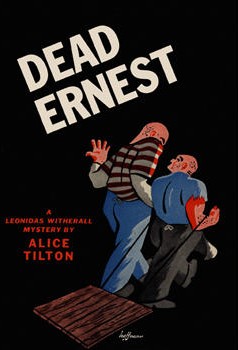
The Adventures of Leonidas Witherall is a radio mystery series broadcast on Mutual from June 4, 1944, through May 6, 1945.
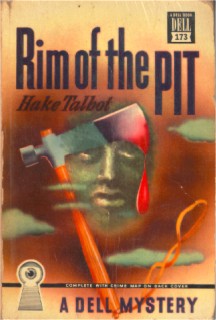
Mapback is a term used by paperback collectors to refer to the earliest paperback books published by Dell Books, beginning in 1943. The books are known as mapbacks because the back cover of the book contains a map that illustrates the location of the action. Dell books were numbered in series. Mapbacks extend from #5 to at least #550; then maps became less of a fixed feature of the books and disappeared entirely in 1951. The occasional number in the series between #5 and #550 contains no map, but some sort of full-page graphic or text connected with the book's contents.

The Cut Direct is a novel that was published in 1938 by Phoebe Atwood Taylor writing as Alice Tilton. It is the second of the eight Leonidas Witherall mysteries.

Cold Steal is a novel that was published in 1939 by Phoebe Atwood Taylor writing as Alice Tilton. It is the third of the eight Leonidas Witherall mysteries.
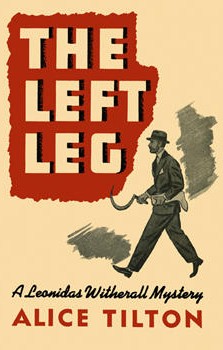
The Left Leg is a novel that was published in 1940 by Phoebe Atwood Taylor writing as Alice Tilton. It is the fourth of the eight Leonidas Witherall mysteries.
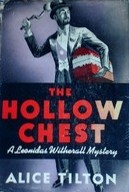
The Hollow Chest is a novel that was published in 1941 by Phoebe Atwood Taylor writing as Alice Tilton. It is the fifth of the eight Leonidas Witherall mysteries.
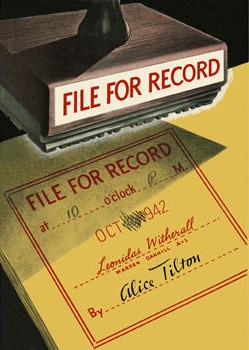
File For Record is a novel that was published in 1943 by Phoebe Atwood Taylor writing as Alice Tilton. It is the sixth of the eight Leonidas Witherall mysteries.

Dead Ernest is a novel that was published in 1944 by Phoebe Atwood Taylor writing as Alice Tilton. It is the seventh of the eight Leonidas Witherall mysteries.

The Iron Clew is a novel that was published in 1947 by Phoebe Atwood Taylor writing as Alice Tilton. It is the eighth and last of the eight Leonidas Witherall mysteries.
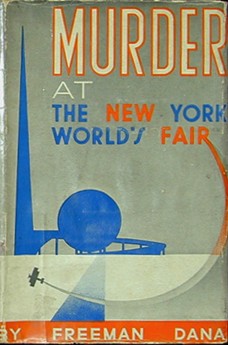
Murder at the New York World's Fair is a novel that was published in 1938 by Phoebe Atwood Taylor writing as Freeman Dana. It is the only mystery she wrote under that name.
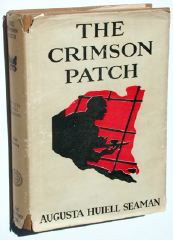
The Crimson Patch, first published in 1936, is a detective story by Phoebe Atwood Taylor which features her series detective Asey Mayo, the "Codfish Sherlock". This novel is a mystery of the type known as a whodunnit.

Figure Away, first published in 1937, is a detective story by Phoebe Atwood Taylor which features her series detective Asey Mayo, the "Codfish Sherlock". This novel is a mystery of the type known as a whodunnit. In 1939, the novel was serialised by several newspapers as ‘Old Home Week Murder’.
Dilys Winn (1939–2016) was an American bookseller who was one of the first to open a bookstore devoted to mystery and detective fiction.
Octagon House is a 1937 serialized novel by Phoebe Atwood Taylor that was distributed by the Associated Press and appeared in multiple newspapers in the United States.














